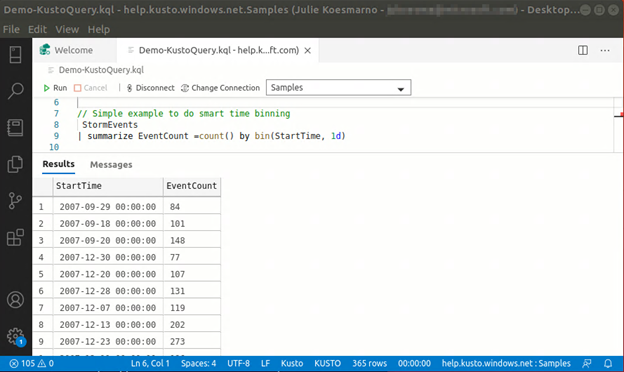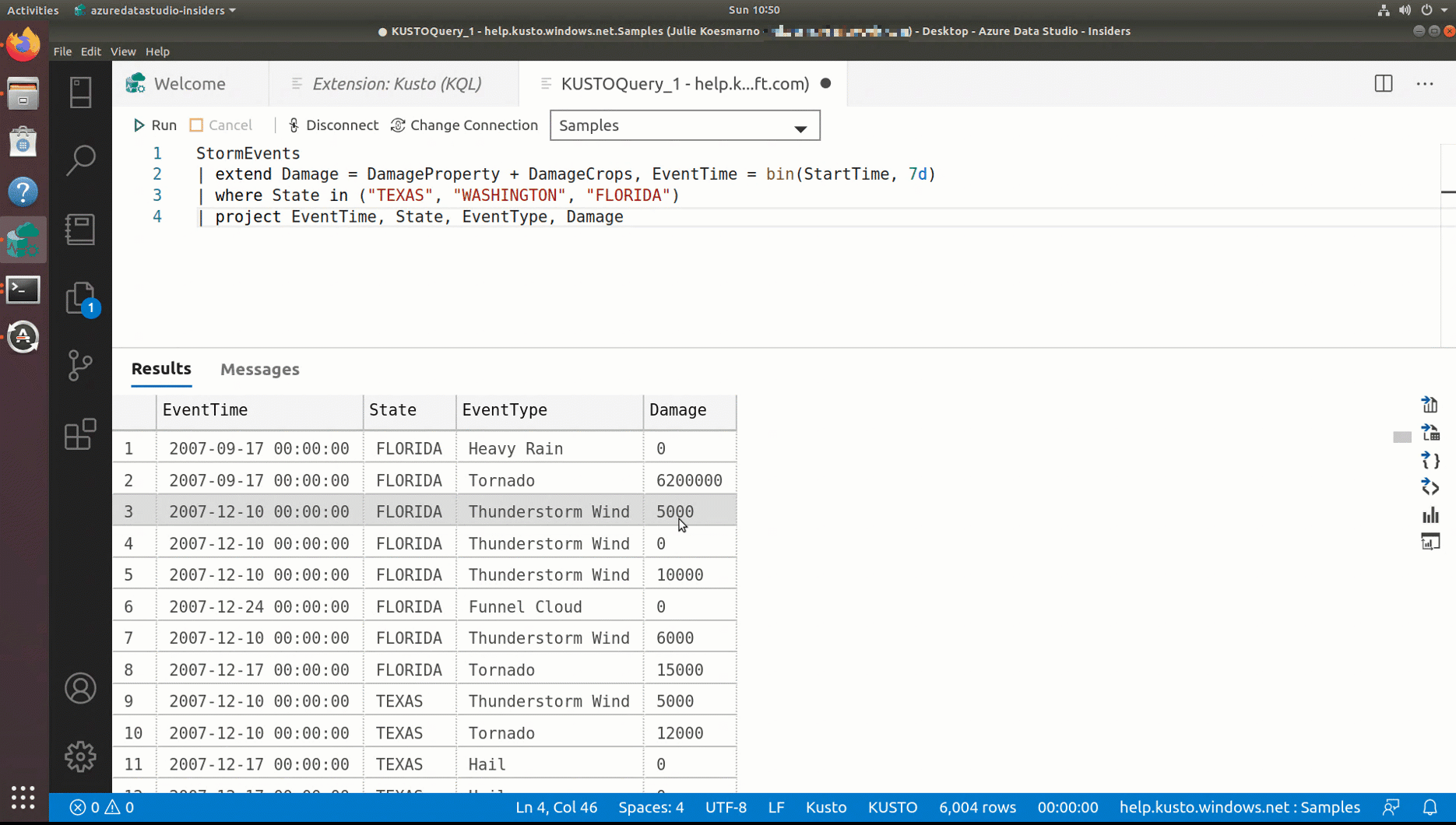Analyze data in Azure Data Explorer using Kusto Query Language (KQL) extension in Azure Data Studio
The Kusto (KQL) extension in Azure Data Studio is now available in preview. This native Kusto (KQL) support brings another modern data experience to Azure Data Studio, a cross-platform client – for Windows, macOS, and Linux. Users can now connect and browse their Azure Data Explorer clusters and databases, write and run KQL, as well as author notebooks with Kusto kernel, all equipped with IntelliSense.

By enabling native Kusto (KQL) experiences in Azure Data Studio, users such as data engineers, data scientists, or data analysts can now quickly discover insights as well as identify trends and anomalies against a massive amount of data stored in Azure Data Explorer.
Here are four key benefits of using Kusto (KQL) extension in Azure Data Studio:
1. Efficiency in data exploration and data analysis
Users working with heterogeneous data sources can now do data exploration and data analysis from SQL and Big Data Clusters to Azure Data Explorer without breaking their flow. By supporting KQL natively with IntelliSense, users can benefit from optimized experience for fast and rich functionalities on a large amount of real-time streaming datasets in Azure Data Explorer.

For more interactive data exploration, users can visualize the resultset from the KQL query in SandDance.

2. Reproducible analyses
Combined with the Kusto kernel addition to Notebook in Azure Data Studio, it makes it easy to create reproducible analyses in notebooks. Notebooks provide the benefits of being able to capture code, results and context on the analysis. When writing KQL queries in code cells, users can also be more productive with the IntelliSense support in Notebooks.
Below is an example of pattern detection in Storm Events data using autocluster plugin in Kusto notebook in Azure Data Studio accessing data from Azure Data Explorer databases:

3. Improved DevOps troubleshooting experience with KQL notebooks
Engineers working on apps with telemetry connected to Azure Data Explorer can easily create a troubleshooting runbook or playbook in Azure Data Studio with Kusto kernel. These runbooks or playbooks, detailing how to troubleshoot apps via telemetry data and how to mitigate, can be stored as notebooks with different kernel types, organized as a Jupyter Book. For example, diagnosis steps and pattern or anomaly detections may be expressed as notebooks with Kusto kernel, and mitigation notebooks in PowerShell or other kernels.
4. Enriching your DevOps flow with KQL files
Azure Data Studio supports a Git source control manager (SCM). Now, users can take advantage of adding their KQL files and KQL notebook files to their Git repositories. This also enables users to add these files as part of their CI/CD pipelines in GitHub or Azure DevOps.
How to get started
- Connecting to Azure Data Explorer cluster in Azure Data Studio, and writing KQL queries.
- Writing KQL notebooks.
- Using KQL magic in Azure Data Studio notebooks.
This preview release is the beginning of a strategic journey to bring rich native Kusto (KQL) experiences in Azure Data Studio. Please feel free to submit your suggestions and bugs on GitHub.



